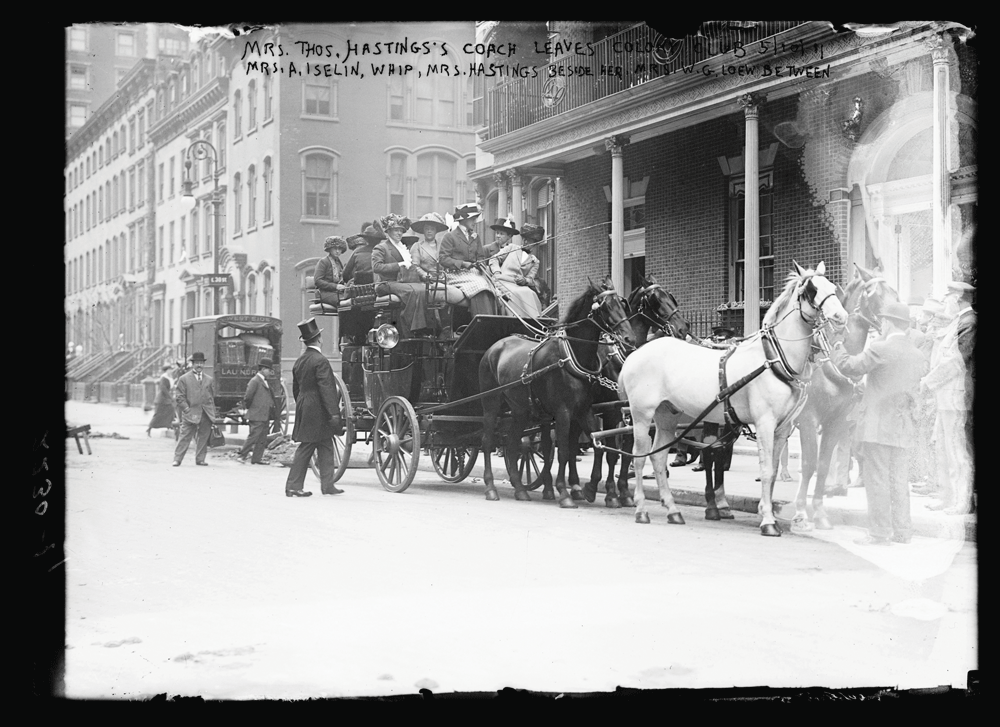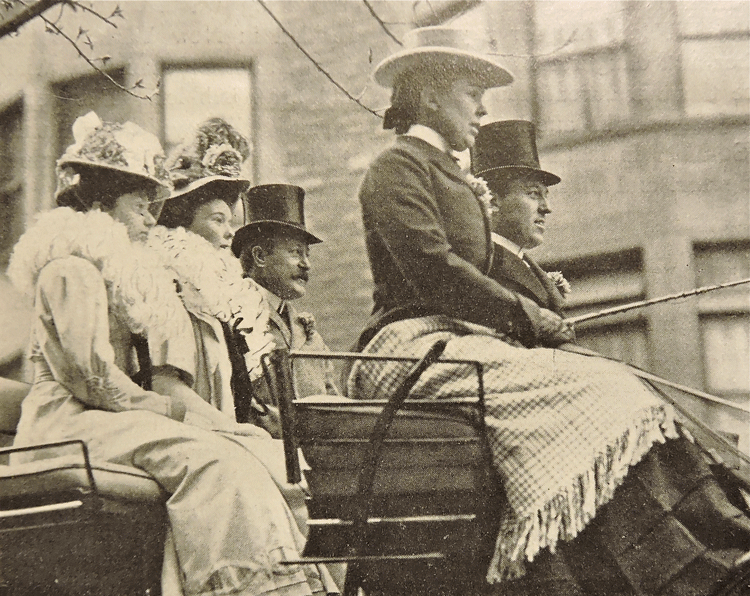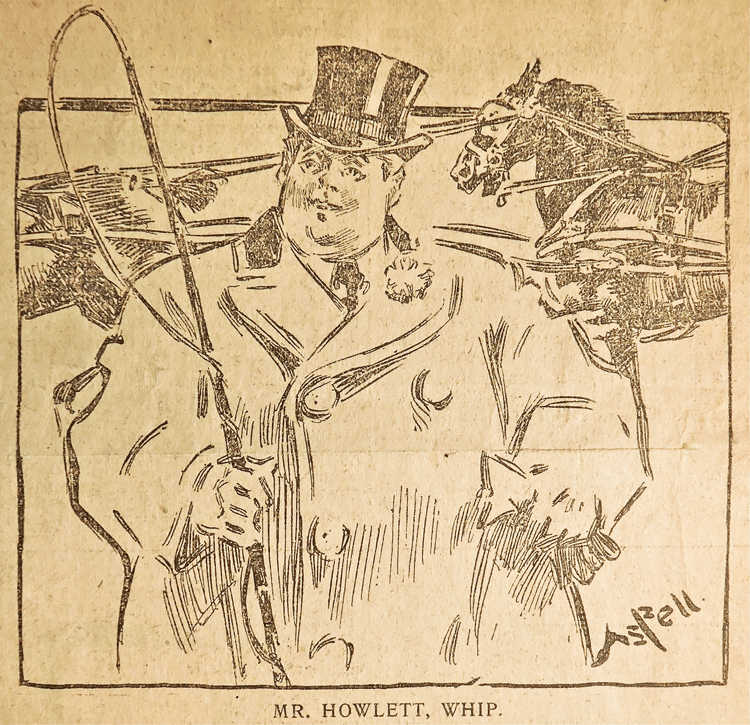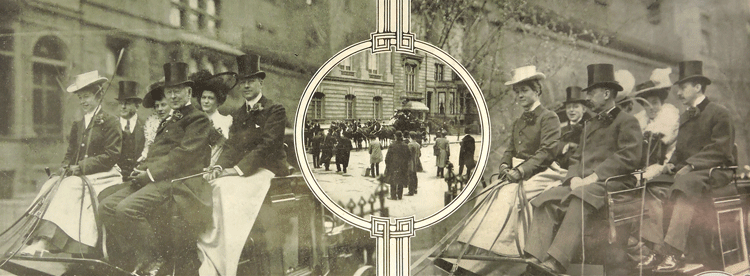Then & There: Such Hardy Perennials The Ladies’ Four-in-Hand Club

Story and photos by Richard Hooper

Like blossoming tulips and daffodils, the annual parade of the Ladies’ Four-in-Hand Club in Manhattan heralded the arrival of spring. Announcements of the club’s activities appeared in all thelocal papers.
On May 3, 1907, The New York Times described the carriages assembling about 11 o’clock along East 72nd Street between Park and Madison Avenues, the usual starting point. After all nine coaches had gathered, they moved straight off and entered Central Park. Proceeding down East Drive to the southern end, they crossed the park to West Drive and turned north. At the upper boundary of Central Park, a review of the equipage took place, following which the parade then looped its way back to the southern end of the park.
That, officially, concluded the parade. However, with a buffet awaiting them at the Colony Club on Madison Avenue at 30th Street, the ladies maintained formation through the city streets to the club for lunch and their just desserts. By one account, this was the very first occasion that the ladies had ventured out of the park and onto city streets, the club’s instructor, Morris Howlett, having advised against such forays.

Howlett, a professional whip, was the son of Edwin Howlett, coachman for decades to members of European aristocracy and known as one of the best driving instructors in the world. Morris had come to America in 1900, quickly becoming the driving teacher to “society.”
Morris’ primary concern was that the skill of some of the women whips might not be sufficient to negotiate the hazards and traffic, including that of motorcars, of New York streets. Indeed, there was a reported incident that in lining up on 72nd Street before one of the parades through Central Park in which, “Miss Cornelia Harriman cautiously tooled her coach in and out of the crowd to a position just ahead of Mrs. Iselin. Beside her, on the box, sat her father. Just as she was negotiating the turn at Madison Avenue, by some maladvertence (sic), a cable car smashed into the side of the coach… It seemed likely that the coach might tip over. But the motorman turned off his power and applied the brakes, and Miss Harriman swung into position, a trifle pale, but smiling.”

The ladies, however, proved to be such hardy perennials that they would have nothing to do with Morris’ restrictions. The Colony Club thus became the start and finish for numerous outings on the streets of New York City and its boroughs. For several weeks in April and May, there would be outings to a selected location every day except Sundays. One year it was to Inwood, at the very top of Manhattan. Another year it was to Bronx Park, just above the zoo. With as many as 10 of the club members perched on top of the coach as passengers, these trips were made with a single coach. Several of the ladies would take turns with the reins.

Longer trips beckoned. One, in lovely weather, was to Tuxedo Park, a round trip of 82 miles made in one day. Another, with six adventurous members of the club, was to Convent, New Jersey, undertaken in a cold downpour and gale. According to an interviewer, Morris (who road with the women as an advisor but was not allowed to drive) thought it was, “absolutely the worst day he had ever spent behind a four.” Portions of the road were flooded to the axle hubs, and, as in fair weather, everyone road on top of the coach. It was 83 miles round trip and used 20 horses.
Both of these excursions began and ended on West 58th Street, at the home of club-member Miss Harriet Alexander. The route taken out of Manhattan crossed the Hudson River on the Fort Lee Ferry—the same Fort Lee that would gain national attention when members of Governor Chris Christie’s administration closed lanes onto the George Washington Bridge in the scandal known as Bridgegate. For some reason, Miss Alexander’s home was used as the terminal for these trips rather than the Colony Club.

The Colony, a women-only club established in 1903, was the unofficial home for the Ladies’ Four-in-Hand Club. It also was a center of activity for many suffragettes seeking the right to vote for women.
And why ever not! ML


